Overview:
During my EDUC 391 practicum, I led the Social Studies instruction for a Grade 3 class. Over the course of three weeks, I taught a unit on global Indigenous cultures.
I began the unit by introducing the topic of culture and indigeneity to students. We spent time reflecting on their own cultures by taking notice of the elements of culture within our own lives. Then, we explored Indigenous cultures within Canada such as Tsimshian culture and Inuit culture. Finally, students worked in groups of three to complete a poster project focused on different Indigenous cultures from around the world.
I structured this unit around a series of questions. The over-arching guiding question driving the lessons in this unit was: “What experiences do we all share and what cultural diversity is there to celebrate?” The essential questions driving this unit were:
- Where in the world do Indigenous peoples live?
- What languages do these different Indigenous groups speak?
- What types of things do various Indigenous peoples do to adapt to their specific environments in order to thrive?
- What types of foods do the Indigenous peoples we look at traditionally eat?
- What types of transportation do/did the Indigenous peoples we look at traditionally use?
- What types of shelters do/did the Indigenous peoples we look at traditionally use?
- What are some of the similarities students can see between their lives and the lives of those from the cultures we investigate?
Throughout the unit, in addition to explicit instruction, we watched videos, read storybooks, brainstormed, and discussed these essential questions. Learning about Indigenous cultures from different climates and regions of the globe helped students to understand the cultural and climatic diversity that exists in our world. Learning about a variety of Indigenous cultures exposed students to a range of diverse ways of being which nurtured multicultural awareness and respect for diversity. Reflecting on the similarities between their own lives and the lives of those from the cultures we investigated helped students recognize that people from all walks of life share some common experiences.
Here you can view samples of student work completed during this unit.
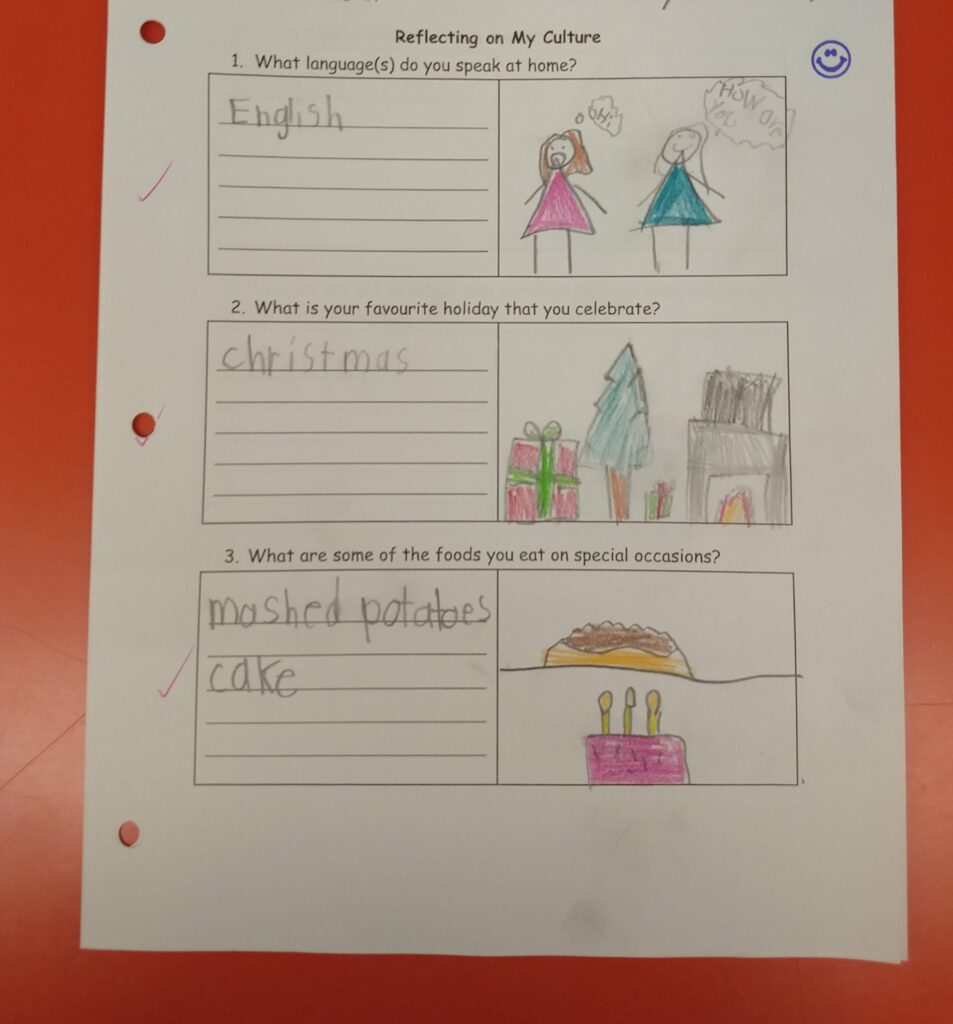
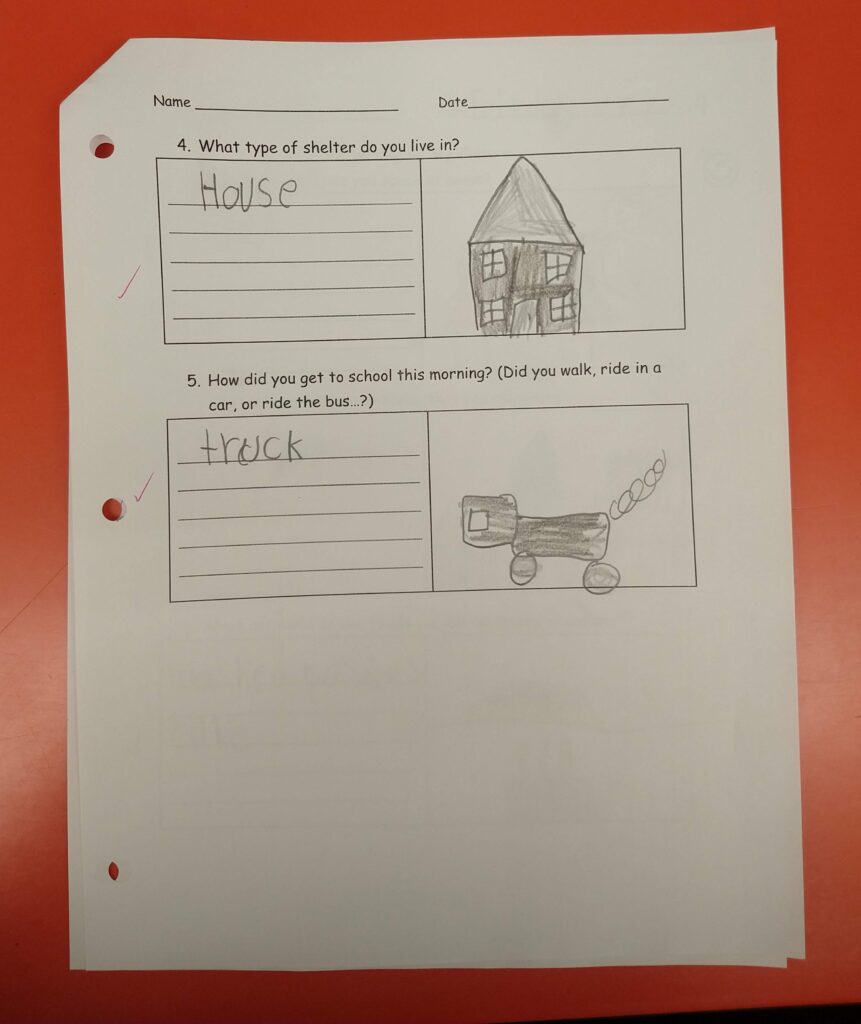
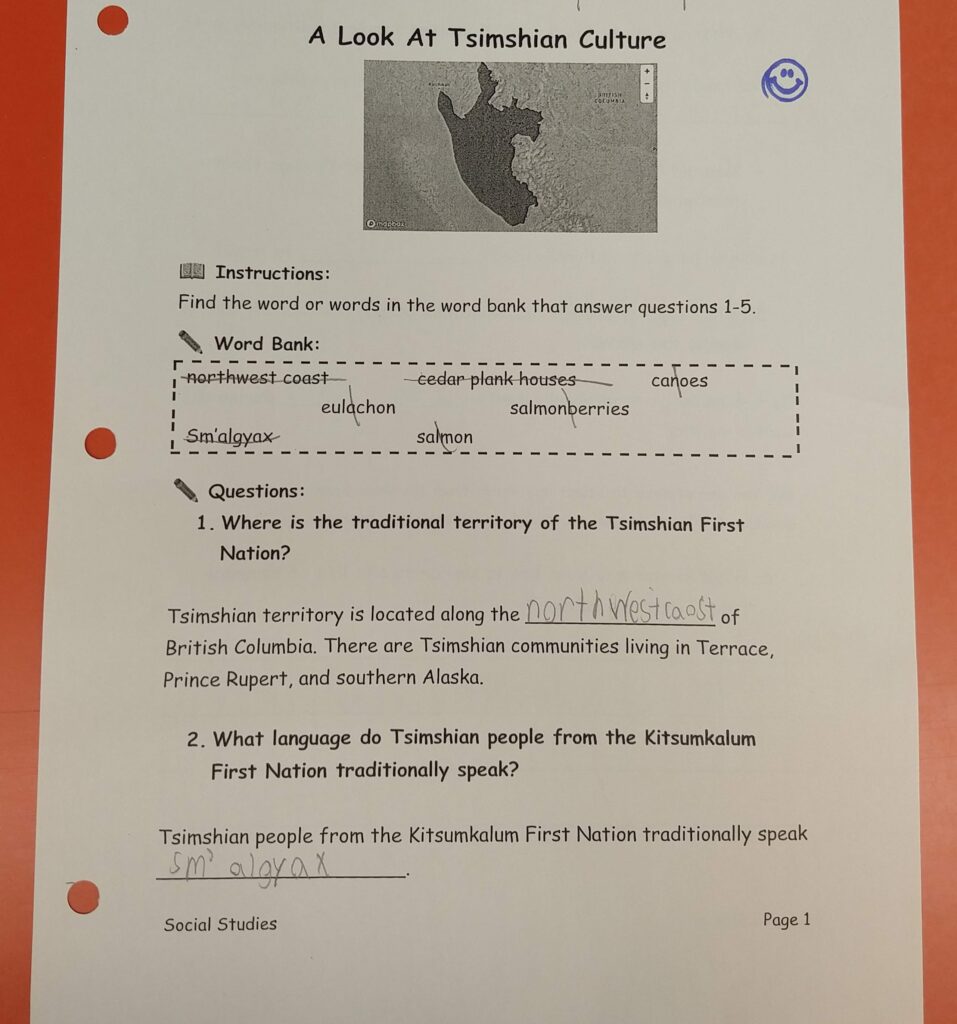
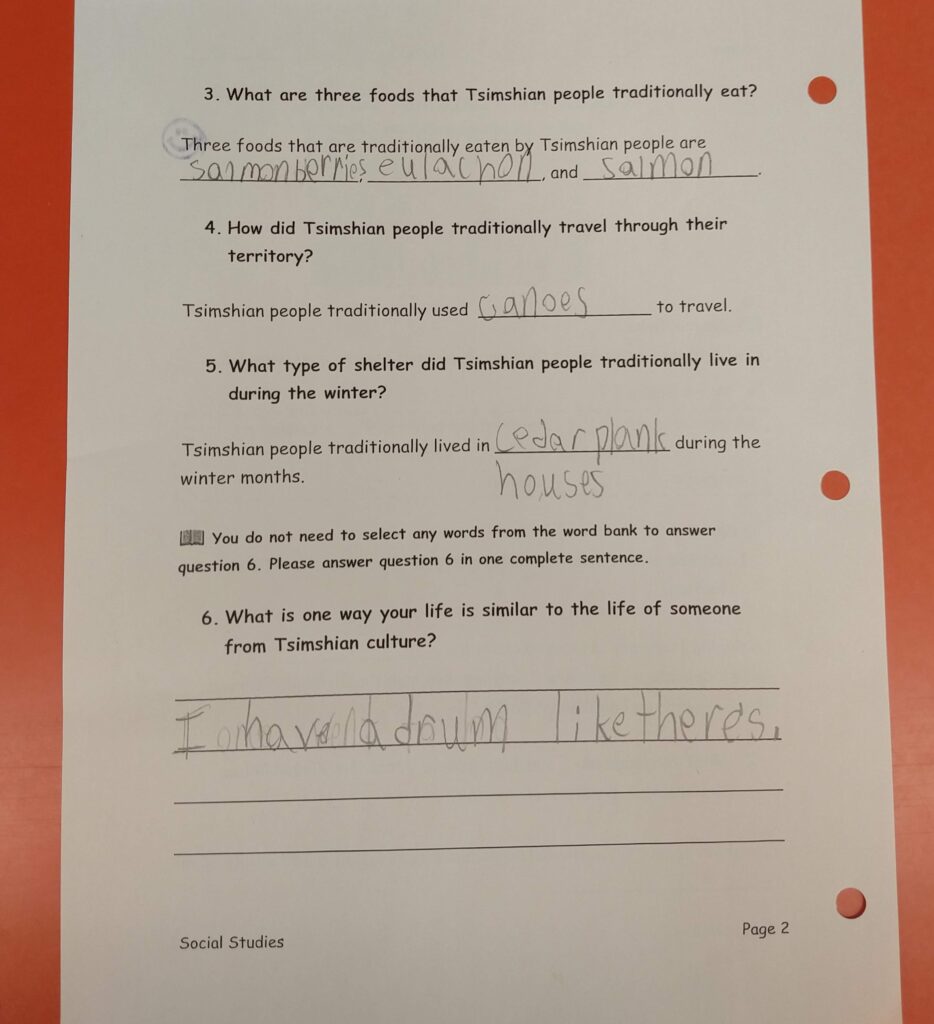
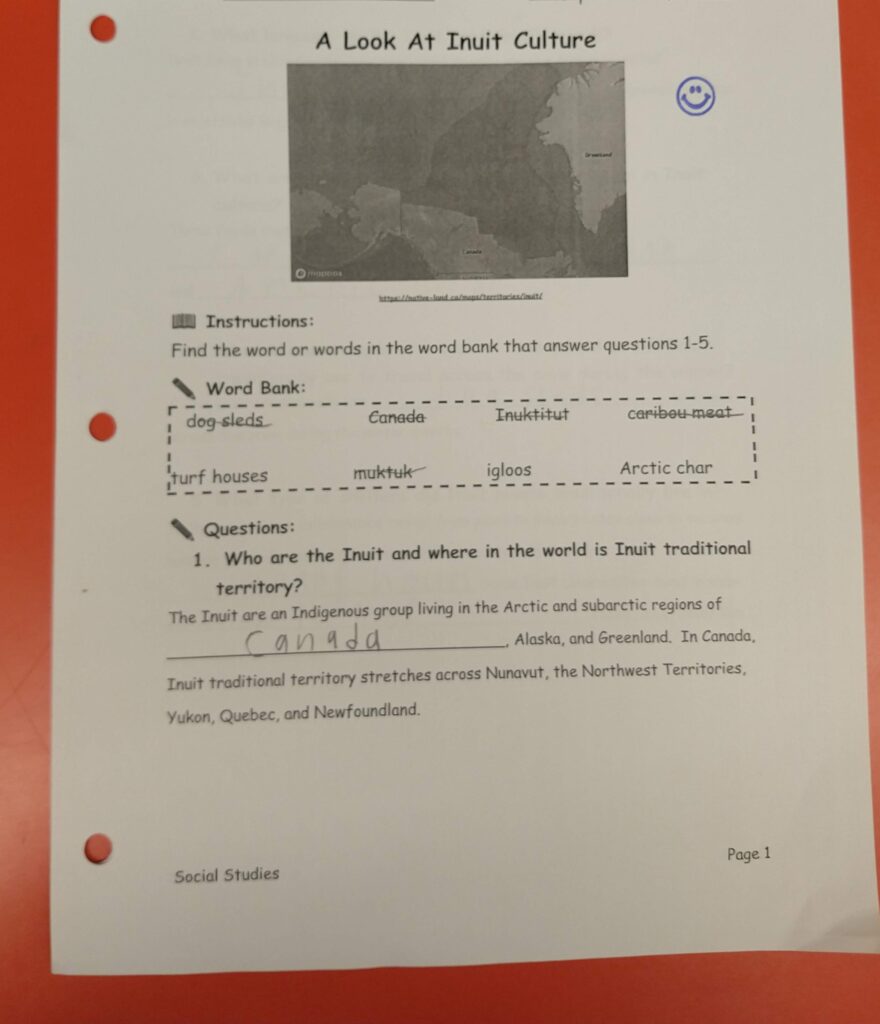
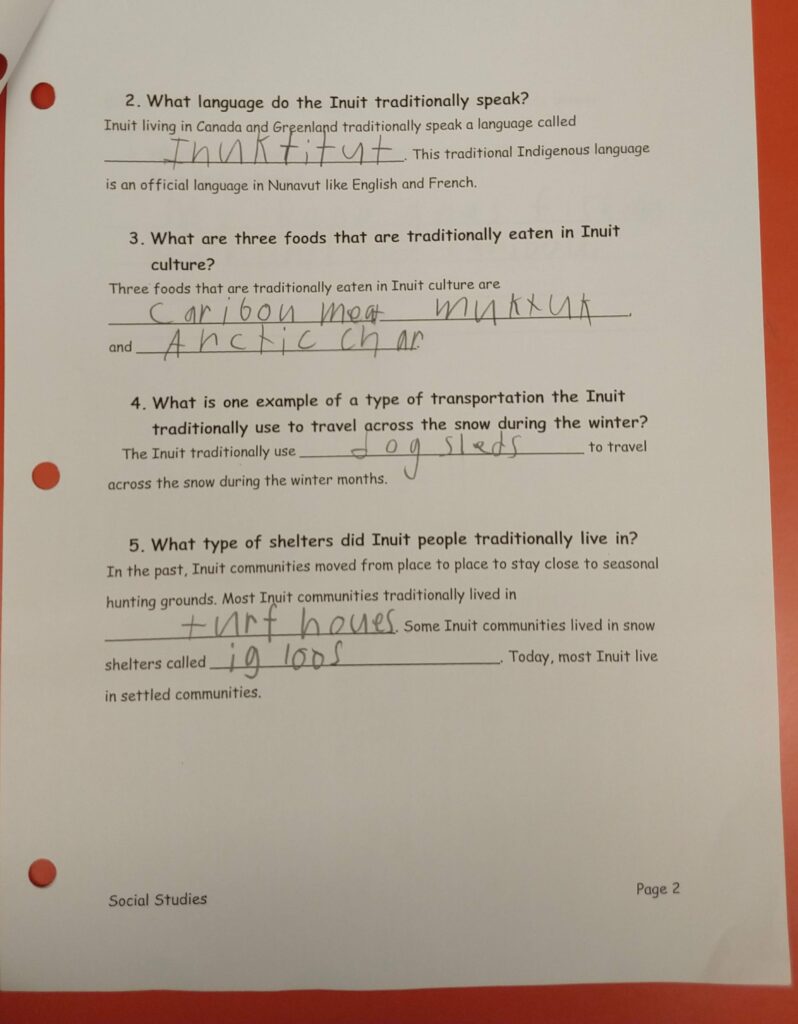
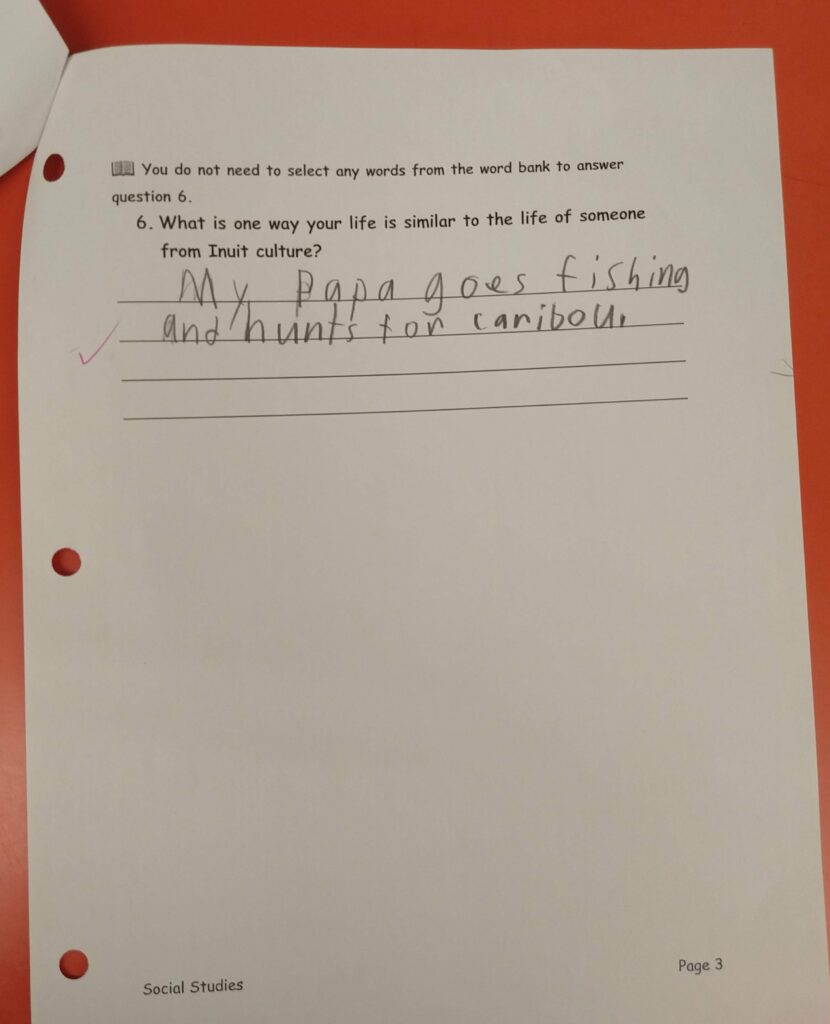
Poster Project:
The group poster project was scaffolded and delivered to students gradually in manageable steps so that all groups could be successful. There were multiple phases to the project. There was a research phase, a poster development phase, and a poster creation phase. Once all the posters were complete, we had a “Show & Tell” day where each group shared their learning with the class. Each day, I set a goal for students and they were responsible for reaching that goal as a group by the end of the day. I assessed the posters as summative products using a rubric which you can find below.
Before students embarked on their journey to creating their own posters, I showed them an example of what I expected. I created a poster using the materials I provided to them based on the lessons I delivered on Inuit culture. This helped to ensure there were clear expectations. My example poster was displayed in the classroom as students completed their projects so it also served as a resource they frequently referred back to as a guide.
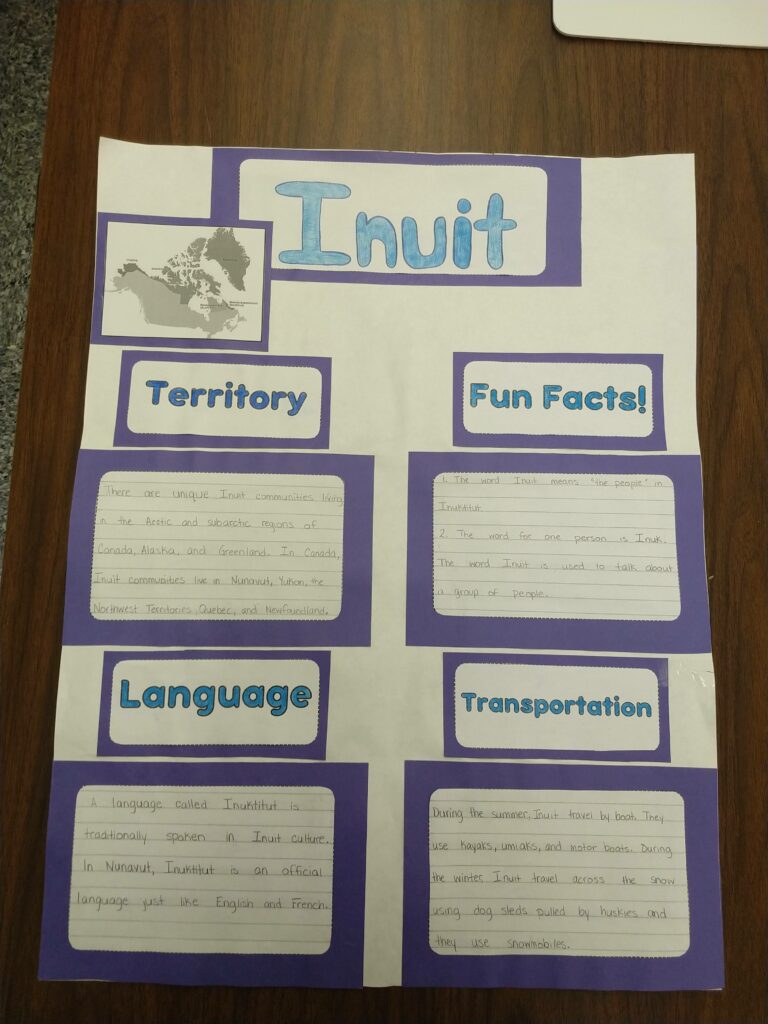
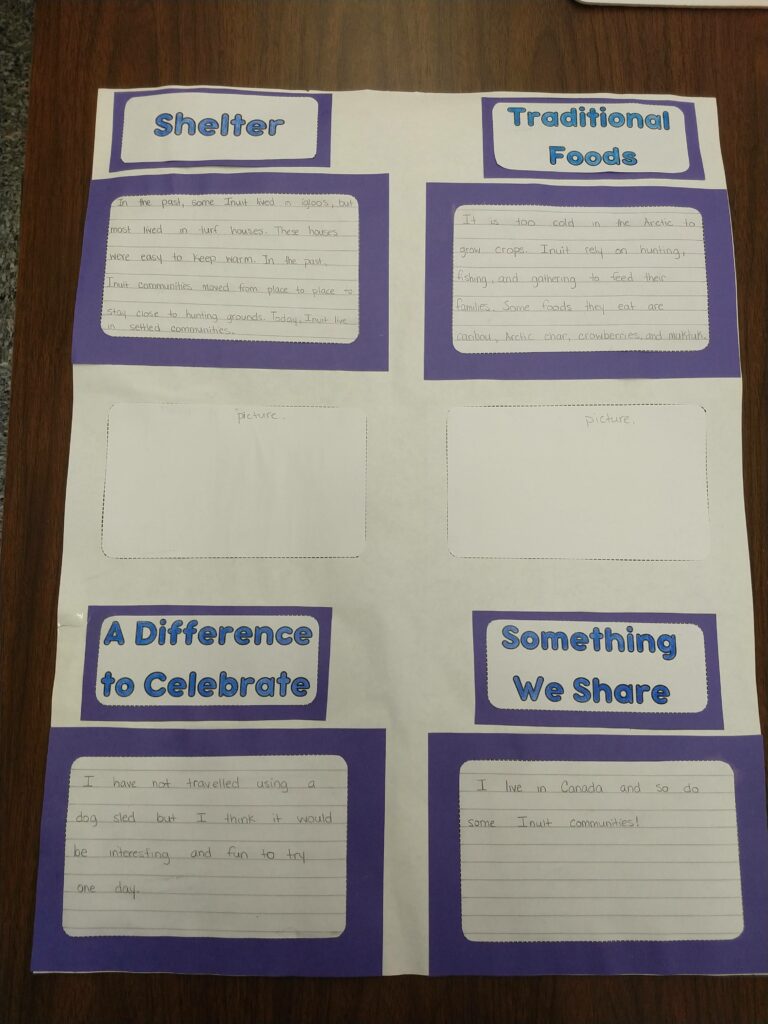
During the research phase, students read an information booklet I developed and used the information within the booklet to answer the research questions in their question booklets.
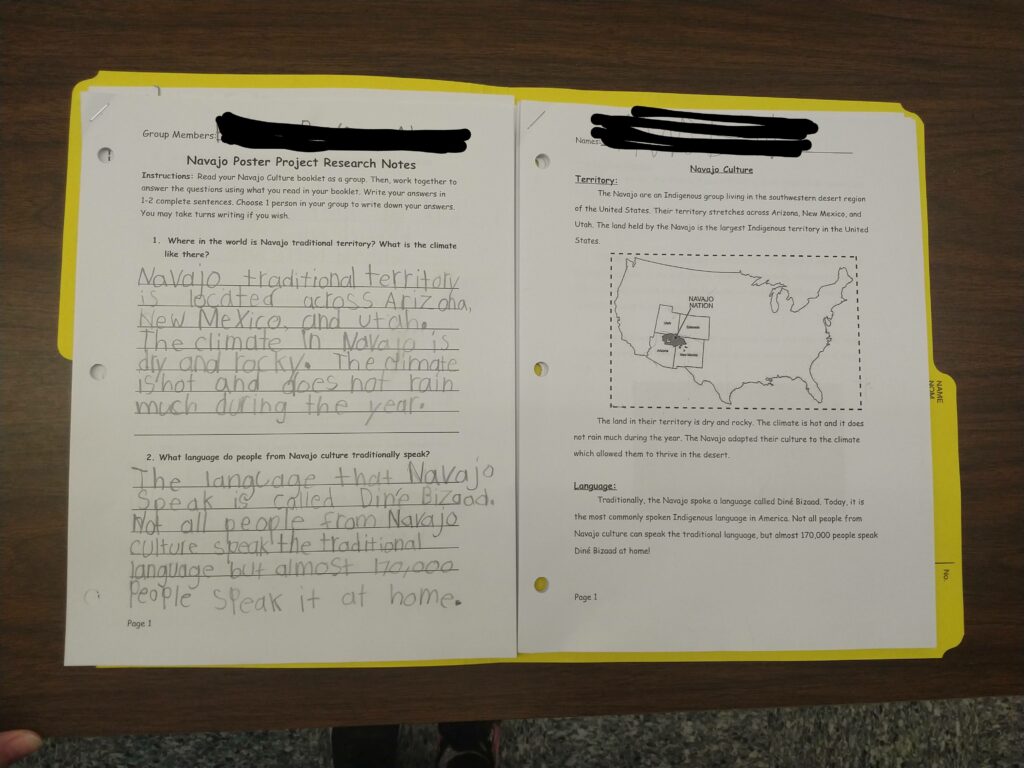
During the poster development phase, students spent time working together to write out their research question answers onto lined paper, designed their titles, coloured in their headings and selected the photos that would appear on their posters.
During the poster creation phase, students spent time cutting and gluing all the pieces of their poster onto the poster paper to create the final product. Here are some examples of the posters students created.
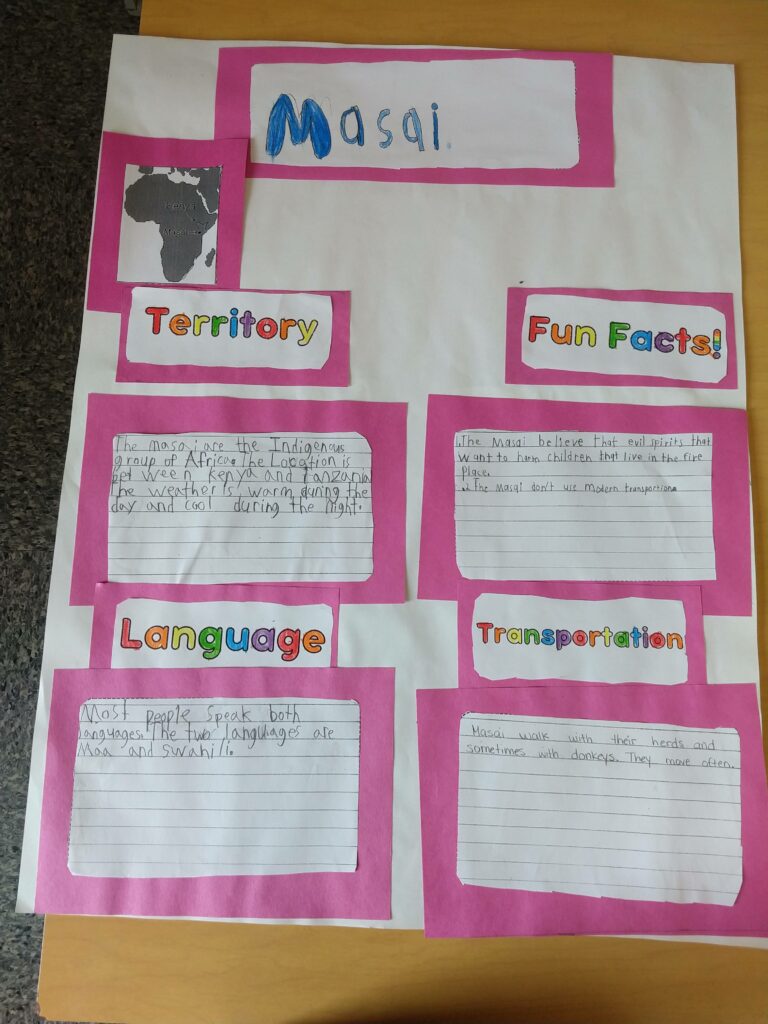
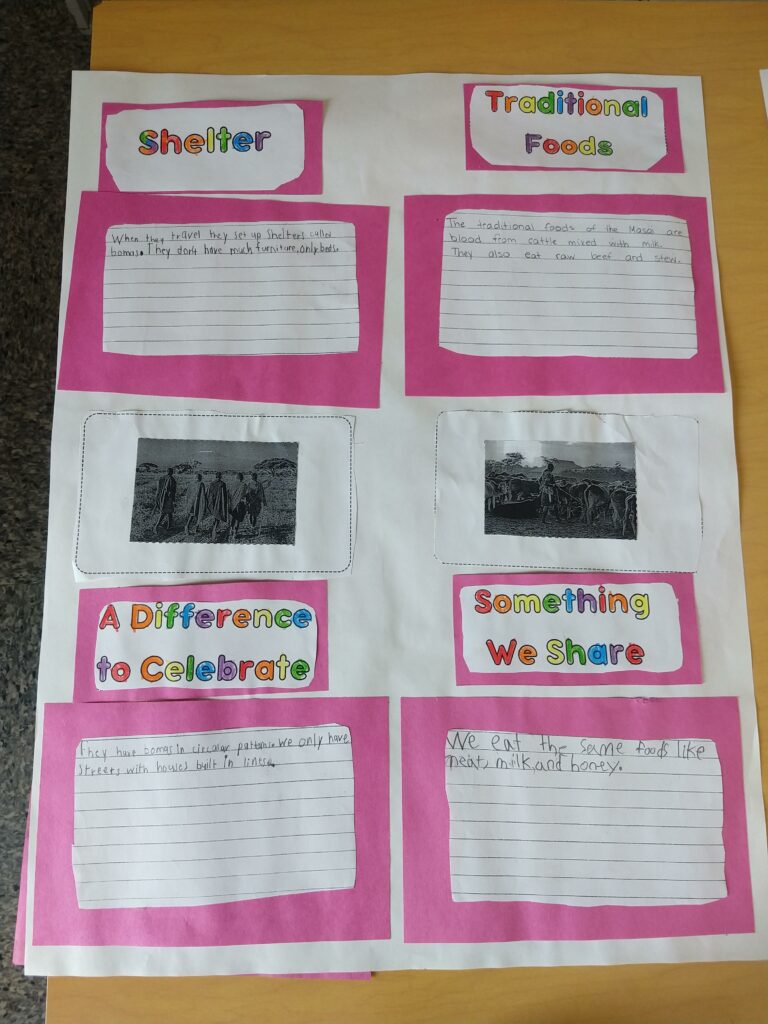
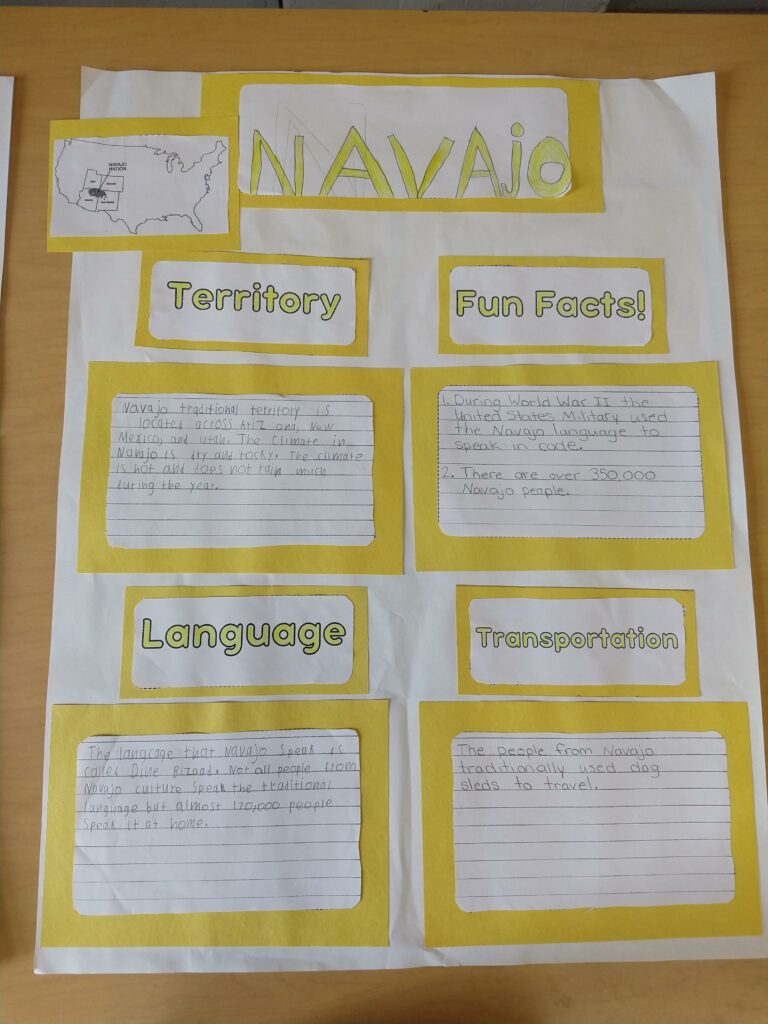
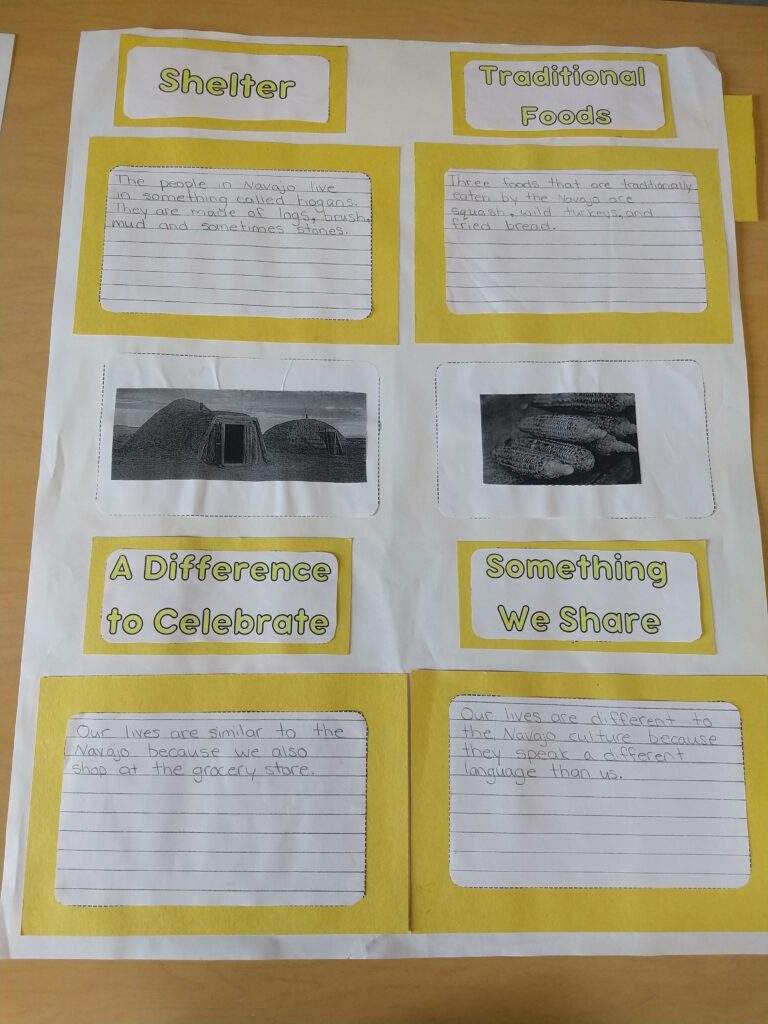
Reflections:
I was very pleased with the outcome of this unit and the products students produced at the end of the poster project process! It was a valuable exercise that helped students to practice working together toward a common goal. The content challenged them to consider how their way of life compares to other ways of life. I framed this unit in a way that helped students to see shared similarities and celebrate differences. Many of them were surprised to learn that there are Indigenous people living all around the world outside of Canada. It was wonderful to see them work collaboratively, negotiate group decisions, delegate different tasks and ultimately be successful in their learning!
If I were to teach this unit again, I would spend more time exploring multiple Indigenous cultures within BC and Canada before expanding out into the global context so that students have even more exposure to the diversity and cultural depth that exists within local contexts. I feel that I made the most of the three weeks I had to deliver this unit and I am excited to continue to develop and adapt it as my career progresses!